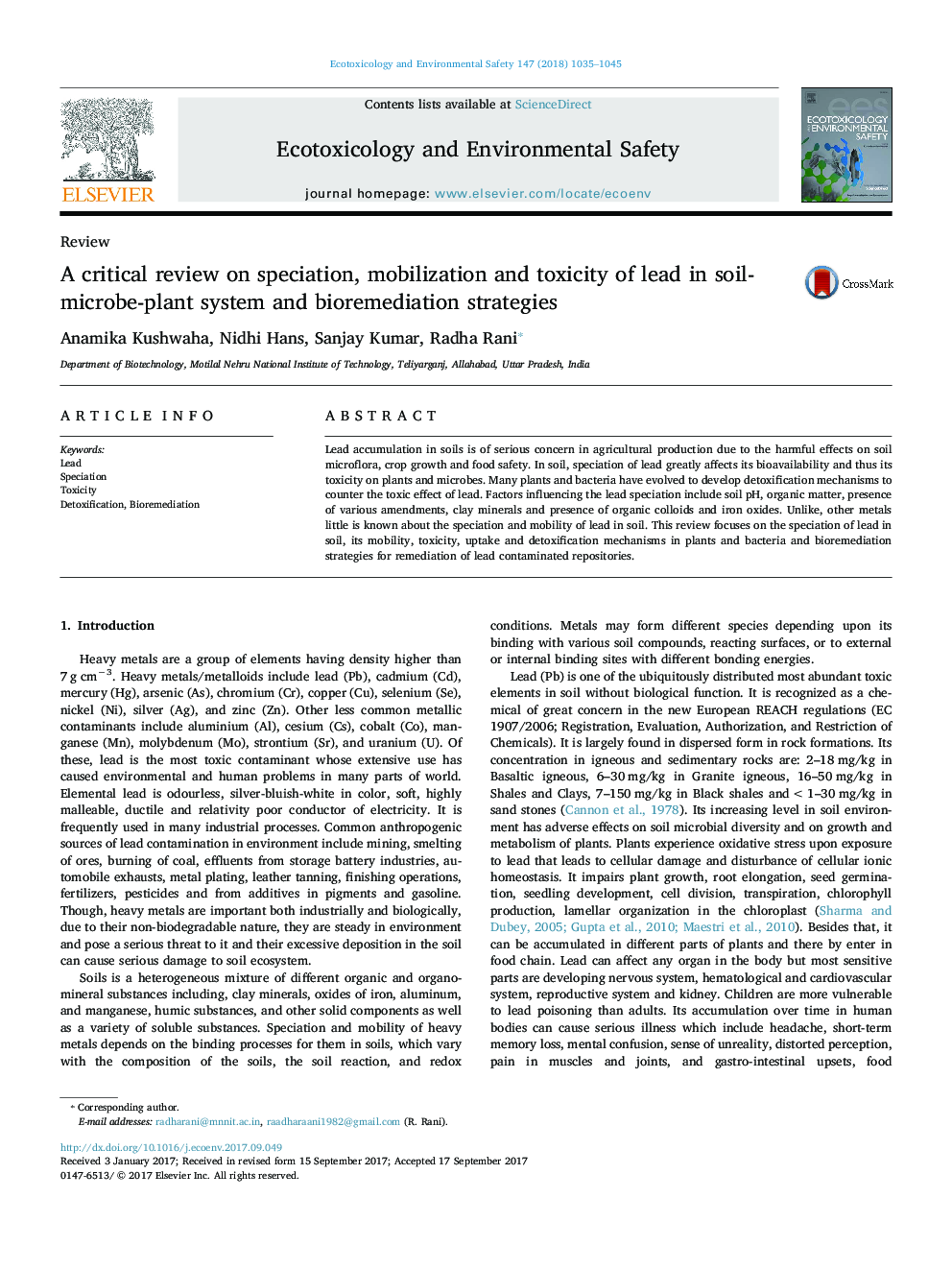| Article ID | Journal | Published Year | Pages | File Type |
|---|---|---|---|---|
| 8854852 | Ecotoxicology and Environmental Safety | 2018 | 11 Pages |
Abstract
Lead accumulation in soils is of serious concern in agricultural production due to the harmful effects on soil microflora, crop growth and food safety. In soil, speciation of lead greatly affects its bioavailability and thus its toxicity on plants and microbes. Many plants and bacteria have evolved to develop detoxification mechanisms to counter the toxic effect of lead. Factors influencing the lead speciation include soil pH, organic matter, presence of various amendments, clay minerals and presence of organic colloids and iron oxides. Unlike, other metals little is known about the speciation and mobility of lead in soil. This review focuses on the speciation of lead in soil, its mobility, toxicity, uptake and detoxification mechanisms in plants and bacteria and bioremediation strategies for remediation of lead contaminated repositories.
Keywords
Related Topics
Life Sciences
Environmental Science
Environmental Chemistry
Authors
Anamika Kushwaha, Nidhi Hans, Sanjay Kumar, Radha Rani,
